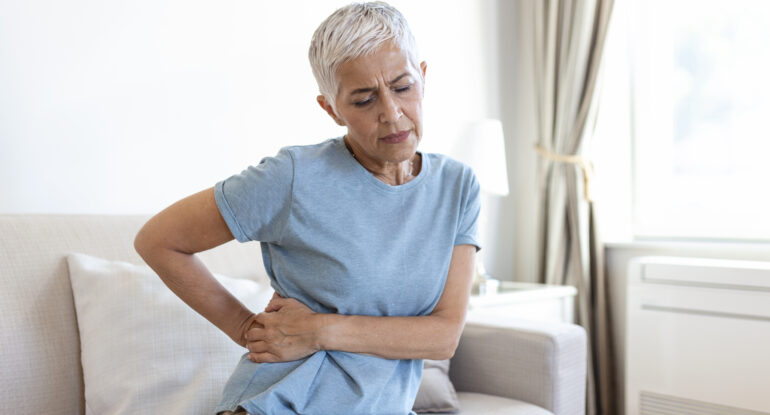Menopause is often described as a period marked by hot flashes, mood swings and sleep troubles. Apart from this, menopause is also known to be associated with the increase in some medical ailments such as back pain and heart disease. This relationship is due to the interplay between hormones and health.
During menopause, estrogen levels decline. As a result of this, bone density, muscle mass and joint health deteriorates. While estrogen is commonly known as a reproductive hormone, they also play an important role in maintaining bone and muscle health. Therefore, when estrogen levels fall, women face a rapid decrease in muscle mass and strength – leaving the back vulnerable to injury and strain. Increasingly, this phenomenon is referred to as “the musculoskeletal syndrome of menopause”.
This syndrome encapsulates a range of symptoms including joint pain, stiffness, muscle aches and decreased muscle tone. The spine is formed by an intricate network of bones, intervertebral discs, muscles and ligaments. During menopause, these structures can cause back pain from osteoporotic fractures, disc degeneration and arthritis.
The current available evidence shows that post-menopausal women experience more chronic back pain than their younger counterparts. It also shows that while spine abnormalities are more common in younger and middle-aged men when compared to age-matched women. However, this trend reverses after menopause.
What are the implications
Menopause is an irreversible physiologic state. To help prevent chronic back pain, women should have regular osteoporosis screenings and exercise consistently to support musculoskeletal health and reduce frailty. Apart from that, one should see a doctor early in the course of disease if she develops low back pain.
Hormone replacement therapy (HRT)
Since the underlying problem with back pain in menopausal women is hormones, it is reasonable to ask the question of whether hormone replacement therapy is protective against menopause-associated back pain.
Hormone replacement therapy is commonly used to treat symptoms related to menopause such as hot flashes. They have also been shown to reduce osteoporosis, which is a predisposing factor for osteoporotic fractures which can cause chronic low back pain. However, there are limited studies examining the direct effect of HRT on future back pain. And more importantly, there are some studies that showed poorer outcomes in HRT users compared to non-HRT users.
What to do if you have back pain?
In the menopausal woman, back pain should not be dismissed. It is important to speak to a doctor who understands back pain well. They can help to find out the root cause of the pain that you are suffering from.
If you have spine pain, it is important to examine your lifestyle habits. Strengthening of the back and core muscles, particularly with weight-bearing and resistance training exercises, can help to stabilize the spine and help you to reduce the amount of pain. It is also important to make sure that you have good bone health and obtain treatment for any underlying osteoporosis.


